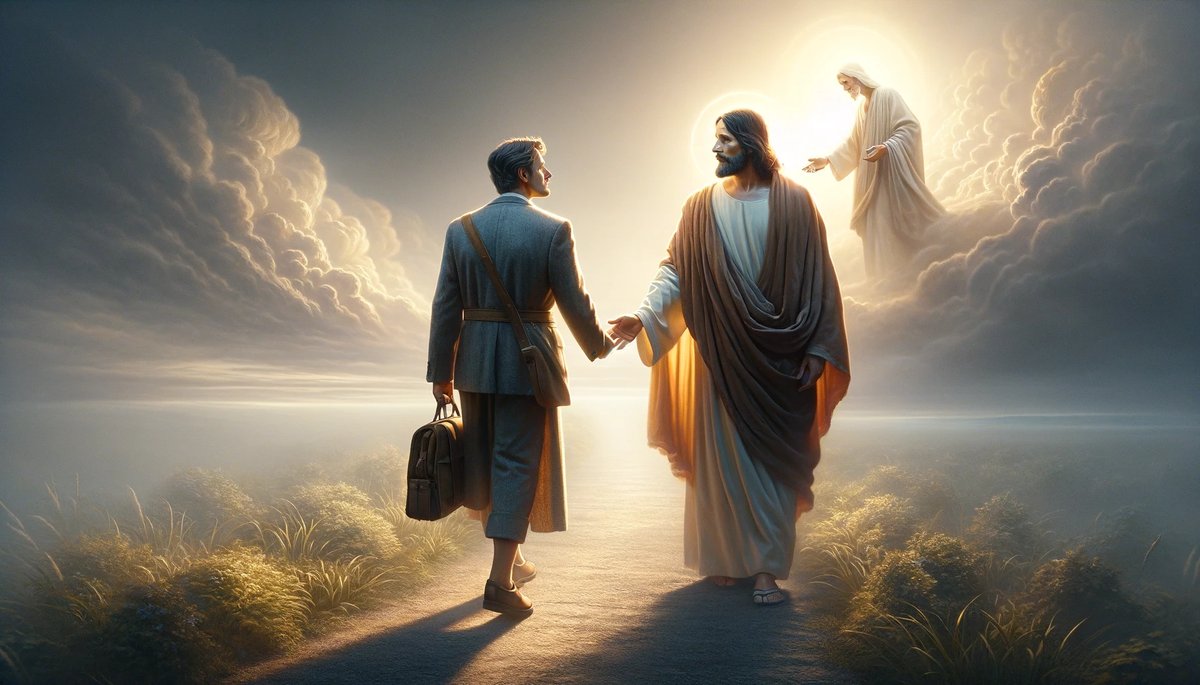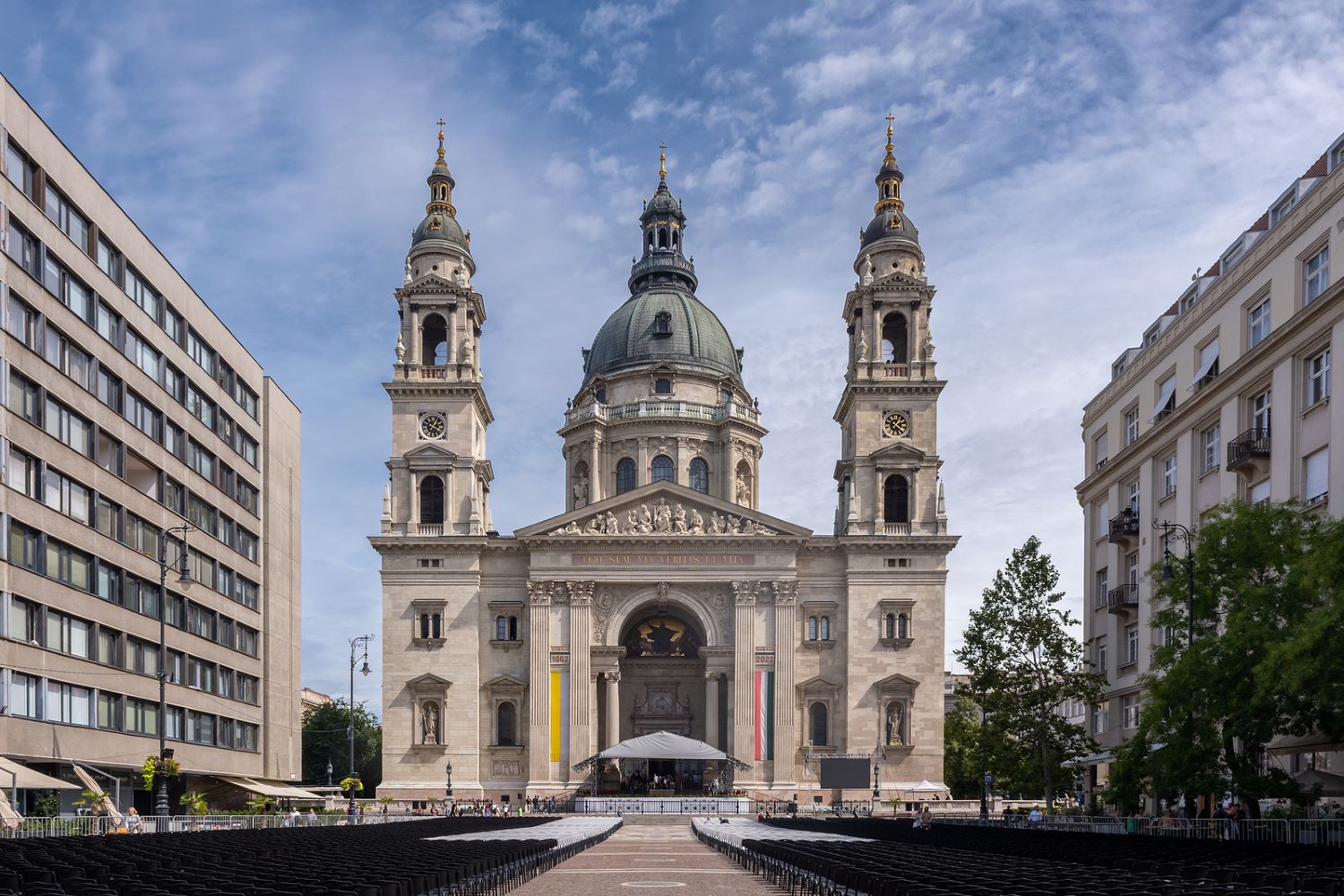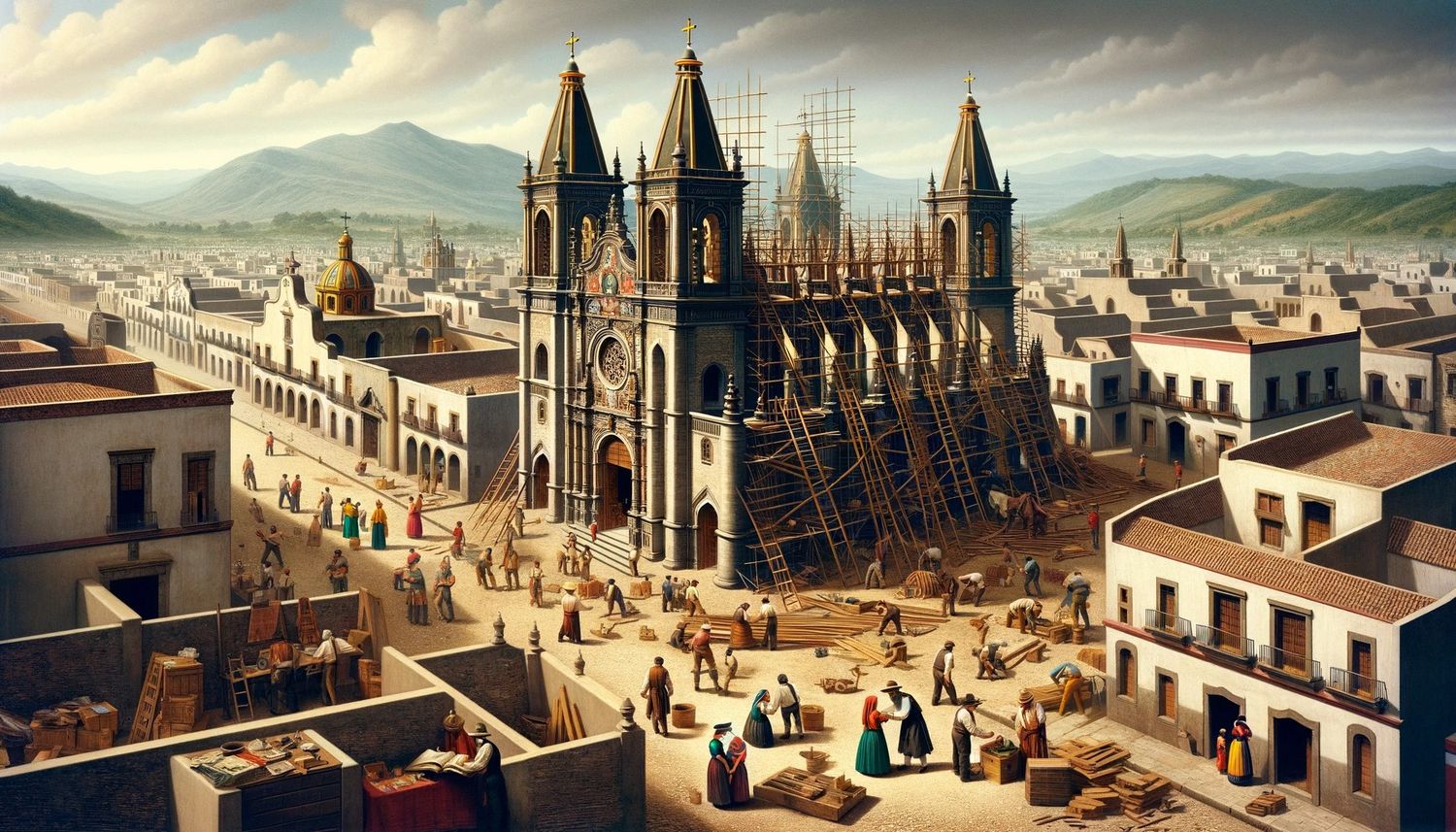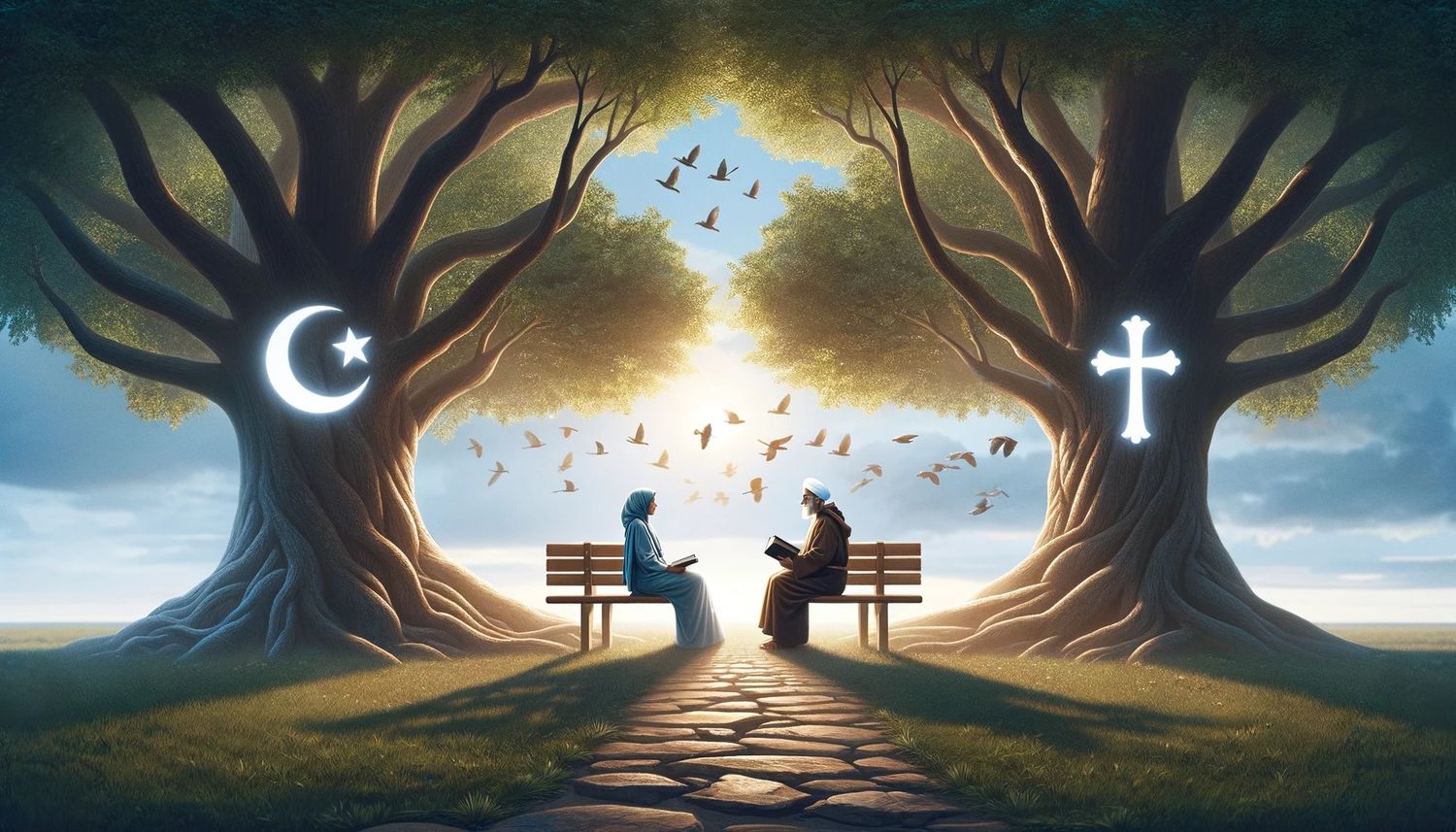Home>Theology and Spirituality>How Has Catholicism Changed Over Time
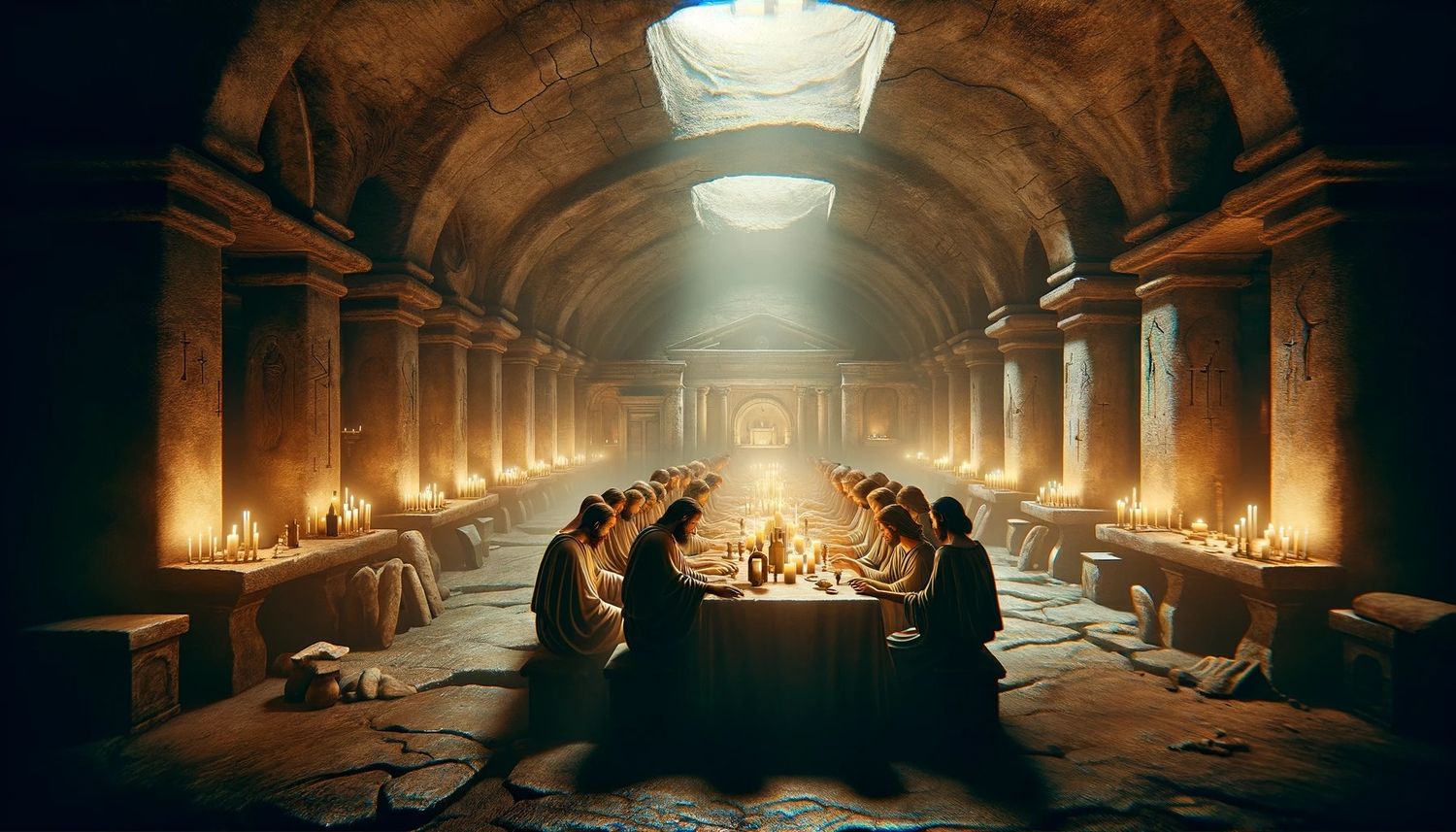

Theology and Spirituality
How Has Catholicism Changed Over Time
Published: February 18, 2024
Peter Smith, Editorial Director at Christian.net, combines deep insights into faith, politics, and culture to lead content creation that resonates widely. Awarded for his contributions to religious discourse, he previously headed a major organization for religious communicators, enhancing dialogue on faith's societal impacts.
Explore the evolution of Catholicism and its impact on theology and spirituality over time. Uncover the changes and developments that have shaped the faith.
(Many of the links in this article redirect to a specific reviewed product. Your purchase of these products through affiliate links helps to generate commission for Christian.net, at no extra cost. Learn more)
Table of Contents
Introduction
Catholicism, one of the oldest and most influential branches of Christianity, has undergone significant changes throughout its long history. From its early beginnings in the first century to its present-day global presence, the evolution of Catholicism has been shaped by a myriad of historical, cultural, and theological factors. Understanding how Catholicism has transformed over time provides valuable insights into the complex tapestry of religious development and the enduring impact of this faith tradition.
The journey of Catholicism is a rich tapestry woven with threads of tradition, doctrine, and adaptation. As we delve into the historical narrative of Catholicism, we encounter pivotal moments that have defined its trajectory and character. From the early days of clandestine gatherings in the catacombs of Rome to the grandeur of the Vatican today, the story of Catholicism is a testament to the enduring power of faith and the resilience of a global community.
As we embark on this exploration, it is essential to recognize the profound influence of Catholicism on art, culture, politics, and morality throughout the centuries. The intricate interplay between the Church and the broader societal landscape has left an indelible mark on human history, shaping the very fabric of civilization. By tracing the evolution of Catholicism, we gain a deeper appreciation for the intricate web of connections that bind the spiritual and the secular realms.
In the following sections, we will journey through the annals of time to uncover the transformative moments that have sculpted the contours of Catholicism. From the early fusion of Christian teachings with Roman traditions to the seismic shifts brought about by the Reformation, each chapter in the story of Catholicism reflects the ebb and flow of human aspirations, conflicts, and aspirations. By immersing ourselves in this narrative, we gain a profound understanding of the enduring relevance and adaptability of Catholicism in an ever-changing world.
Read more: How Did Luther Change Holy Communion
Early History of Catholicism
The early history of Catholicism traces back to the first century AD, with the emergence of the Christian community in the eastern Mediterranean region. Following the crucifixion and resurrection of Jesus Christ, his disciples fervently spread his teachings, laying the foundation for what would eventually become the Catholic Church. The term "Catholic" itself stems from the Greek word "katholikos," meaning "universal," reflecting the Church's aspiration to encompass all believers.
During its formative years, the Christian community faced persecution and marginalization under the Roman Empire. Despite these challenges, the faith continued to gain traction, attracting a diverse array of followers from different social strata. The early Christians congregated in private homes and catacombs, fostering a sense of community and solidarity amidst adversity.
As the Christian movement expanded, the need for organizational structure and doctrinal coherence became increasingly apparent. This led to the development of a hierarchical system of leadership, with bishops assuming pivotal roles in overseeing local congregations. The writings of early Church fathers, such as Ignatius of Antioch and Clement of Rome, provided theological insights and guidance, contributing to the consolidation of Christian beliefs and practices.
The pivotal moment in the early history of Catholicism came with the conversion of Emperor Constantine to Christianity in the early 4th century. This monumental shift in imperial policy not only halted the persecution of Christians but also elevated Christianity to a privileged position within the Roman Empire. The Council of Nicaea in 325 AD, convened by Constantine, sought to address theological disputes and establish a unified understanding of Christian doctrine. This gathering laid the groundwork for the Nicene Creed, a statement of faith that remains central to Catholic liturgy to this day.
The subsequent centuries witnessed the gradual consolidation of the Catholic Church's authority and influence, as it navigated through theological controversies, missionary endeavors, and interactions with various cultures. The early history of Catholicism reflects a dynamic and multifaceted process of growth, adaptation, and institutionalization, laying the groundwork for the enduring legacy of the Church.
This period of foundational development set the stage for the expansive evolution of Catholicism, shaping its identity and mission in profound ways. The early Christians' unwavering commitment to their beliefs, coupled with their resilience in the face of adversity, established a resilient foundation upon which the edifice of Catholicism would continue to be built in the centuries to come.
The Influence of the Roman Empire
The influence of the Roman Empire on the development of Catholicism cannot be overstated. In the early centuries of the Christian era, the Roman Empire served as the backdrop against which the nascent faith of Christianity took root and flourished. The convergence of Roman political power, cultural practices, and religious milieu with the burgeoning Christian movement profoundly shaped the trajectory of Catholicism.
One of the most significant contributions of the Roman Empire to the early Christian community was the establishment of a network of roads and sea routes, facilitating the swift dissemination of Christian teachings and the mobility of missionaries. This infrastructure enabled the seamless spread of the Christian message across the vast expanse of the empire, fostering the growth of Christian communities in diverse regions.
Furthermore, the Roman system of governance and administration provided a framework within which the organizational structure of the early Church could evolve. The concept of hierarchical authority, prevalent in Roman society, influenced the development of the ecclesiastical hierarchy within the Christian community. This hierarchical model, with bishops assuming leadership roles in local congregations, mirrored the administrative structure of the Roman Empire, contributing to the consolidation of the Church's internal governance.
The patronage of Christianity by Emperor Constantine and his successors marked a pivotal turning point in the relationship between the Roman state and the Christian faith. The Edict of Milan in 313 AD, issued by Constantine and co-emperor Licinius, granted religious tolerance to Christians, effectively ending the persecution they had endured for centuries. Subsequent imperial support provided the Church with resources, privileges, and legal protections, propelling Christianity from the margins to the center of Roman society.
The architectural legacy of the Roman Empire also left an indelible imprint on the physical manifestation of Christian worship. The construction of basilicas, modeled after Roman public buildings, became emblematic of Christian architectural expression. These grand structures, such as the Basilica of Maxentius and the Basilica of Constantine in Rome, served as prototypes for Christian places of worship, embodying the fusion of Roman architectural aesthetics with Christian religious symbolism.
In essence, the influence of the Roman Empire on the early development of Catholicism was multifaceted, encompassing infrastructure, governance, patronage, and architectural expression. This interplay between Roman institutions and Christian beliefs laid the groundwork for the enduring symbiosis between Catholicism and the cultural legacy of the Roman Empire, shaping the identity and trajectory of the Church for centuries to come.
The Great Schism
The Great Schism, also known as the East-West Schism, stands as a watershed moment in the history of Christianity, marking the definitive split between the Eastern Orthodox Church and the Roman Catholic Church. This profound rupture, which unfolded over a series of events and theological disputes, resulted in the division of the Christian world into Eastern and Western branches, each with its distinct ecclesiastical traditions, doctrinal emphases, and organizational structures.
The roots of the Great Schism can be traced back to the gradual divergence between the Eastern and Western Christian communities, fueled by linguistic, cultural, and theological disparities. The growing tension between the patriarchates of Rome and Constantinople, the two preeminent centers of Christianity, laid the groundwork for the eventual rupture. Disputes over doctrinal nuances, ecclesiastical authority, and liturgical practices exacerbated the widening chasm between the two spheres of Christendom.
The pivotal moment in the unfolding of the Great Schism occurred in 1054 when a mutual excommunication between the Pope of Rome, Leo IX, and the Patriarch of Constantinople, Michael Cerularius, crystallized the schism. This dramatic act of anathematization formalized the split, severing the ties that had bound the Eastern and Western churches for centuries. The excommunications, issued amidst a backdrop of theological disagreements and jurisdictional conflicts, symbolized the irreconcilable rupture that had come to define the relationship between the two branches of Christianity.
The consequences of the Great Schism reverberated across the Christian world, ushering in an era of estrangement and theological divergence. The Eastern Orthodox Church, centered in Constantinople, embraced a distinct theological ethos, ecclesiastical governance, and liturgical tradition, while the Roman Catholic Church, with its seat in Rome, charted its course with a unique doctrinal emphasis, papal primacy, and sacramental practice. The schism not only fractured the unity of the Christian faith but also engendered enduring divisions that would shape the course of European and global history.
The Great Schism stands as a testament to the complex interplay of theological, cultural, and political factors in shaping the trajectory of Christianity. Its legacy endures as a poignant reminder of the enduring consequences of discord and division within the body of Christ. While efforts at reconciliation have been undertaken in modern times, the Great Schism remains a defining chapter in the narrative of Christian history, underscoring the profound impact of theological disagreements on the unity and diversity of the Church.
The Reformation
The Reformation, a transformative movement that swept across Europe in the 16th century, heralded a seismic shift in the religious landscape and the very fabric of Western civilization. At the heart of the Reformation lay a fervent call for reform within the Roman Catholic Church, driven by a potent combination of theological, political, and social forces. The movement, catalyzed by influential figures such as Martin Luther, John Calvin, and Huldrych Zwingli, unleashed a wave of religious fervor and intellectual ferment that reverberated across the continent.
Central to the Reformation was the critique of perceived abuses and deviations within the Catholic Church, particularly concerning the sale of indulgences, the authority of the papacy, and the interpretation of sacred scripture. Martin Luther, a German monk and theologian, ignited the flames of reform with his Ninety-Five Theses, a bold indictment of the Church's practices, which he famously nailed to the door of the Wittenberg Castle Church in 1517. This defiant act served as a catalyst for widespread debate and dissent, propelling the Reformation into full force.
The dissemination of Luther's ideas was facilitated by the advent of the printing press, which enabled the rapid spread of pamphlets, treatises, and vernacular translations of the Bible. This newfound accessibility to theological discourse empowered individuals across social strata to engage with the reformist ideas, fostering a climate of intellectual inquiry and religious introspection.
The Reformation also witnessed the emergence of new theological paradigms, such as the concept of salvation by faith alone (sola fide) and the priesthood of all believers, which challenged traditional Catholic doctrines and sacramental practices. The proliferation of Protestant denominations, including Lutheranism, Calvinism, and Anglicanism, reflected the diverse theological currents that flowed from the Reformation, giving rise to a pluralistic tapestry of Christian expressions.
The political ramifications of the Reformation were profound, as rulers and city-states aligned themselves with either the Catholic Church or the burgeoning Protestant movements, leading to conflicts and realignments that reshaped the geopolitical landscape of Europe. The Peace of Augsburg in 1555, which established the principle of cuius regio, eius religio (whose realm, his religion), formalized the coexistence of Catholicism and Lutheranism within the Holy Roman Empire, setting a precedent for religious pluralism.
The Reformation stands as a watershed moment in the history of Christianity, engendering enduring theological, cultural, and social transformations that continue to resonate in the contemporary world. Its legacy is not merely confined to the realm of religious doctrine but extends to the realms of politics, education, and individual conscience, leaving an indelible imprint on the tapestry of Western civilization.
Read more: How To Pray In Catholicism
Vatican II and Modern Catholicism
Vatican II, formally known as the Second Vatican Council, stands as a pivotal moment in the evolution of modern Catholicism, ushering in a period of profound renewal, reflection, and adaptation within the Church. Convened by Pope John XXIII in 1962 and concluded under Pope Paul VI in 1965, Vatican II represented a concerted effort to engage with the challenges and opportunities of the contemporary world, reinvigorating the Church's mission and identity in the midst of societal upheavals and global transformations.
At the heart of Vatican II was a spirit of aggiornamento, or "updating," aimed at fostering dialogue between the Church and the modern world. The council sought to reexamine and reinterpret Catholic teachings and practices in light of contemporary realities, embracing a posture of openness and engagement with diverse cultural, social, and intellectual currents. This ethos of dialogue and adaptation resonated with the broader ethos of the mid-20th century, characterized by rapid technological advancements, decolonization movements, and shifting social mores.
One of the most notable outcomes of Vatican II was the promulgation of a series of groundbreaking documents that addressed a wide array of theological, liturgical, and pastoral themes. The Constitution on the Sacred Liturgy, Sacrosanctum Concilium, heralded a reinvigoration of the Church's worship practices, emphasizing active participation, vernacular languages, and a renewed emphasis on the Eucharist as the "source and summit" of Christian life. This liturgical renewal breathed new life into the celebration of the Mass and sacraments, fostering a sense of communal engagement and spiritual vitality.
Furthermore, Vatican II's Declaration on Religious Freedom, Dignitatis Humanae, articulated the Church's stance on human rights and religious liberty, affirming the dignity of the individual conscience and advocating for the freedom of religion in the public square. This marked a significant departure from earlier positions and underscored the Church's commitment to engaging with pluralistic societies and upholding the rights of all individuals to practice their faith without coercion or discrimination.
The council also addressed the Church's relationship with other Christian traditions and non-Christian religions, fostering a spirit of ecumenism and interfaith dialogue. The Decree on Ecumenism, Unitatis Redintegratio, sought to promote unity among Christians and to engage in dialogue with other religious traditions, emphasizing the shared elements of faith and the pursuit of common goals in the service of humanity.
In essence, Vatican II represented a transformative moment in the life of the Catholic Church, signaling a willingness to engage with the complexities of the modern world while remaining rooted in the timeless truths of the Christian faith. The council's legacy continues to reverberate in the contemporary Church, inspiring ongoing reflections on the Church's mission, its engagement with diverse cultures, and its commitment to social justice and human dignity.
Current Challenges and Changes in Catholicism
In the contemporary landscape, Catholicism grapples with a myriad of challenges and navigates through a period of profound change, shaping the trajectory of the Church in the 21st century. One of the foremost challenges confronting Catholicism pertains to the evolving social and cultural dynamics that influence the lived experience of faith. The Church faces the task of engaging with an increasingly secularized world, where traditional religious frameworks are being reevaluated in light of shifting values and priorities. This necessitates a nuanced approach to evangelization and pastoral care, one that resonates with the complexities of modern life while remaining faithful to the core tenets of the Catholic faith.
Moreover, the Catholic Church contends with internal challenges related to its institutional structures, governance, and transparency. The imperative of addressing issues of clerical abuse and misconduct has prompted a profound reckoning within the Church, compelling a rigorous commitment to accountability, justice, and safeguarding the vulnerable. This ongoing process of reform seeks to uphold the integrity of the Church's mission while fostering a culture of transparency and healing.
In the realm of global interconnectedness, Catholicism grapples with the imperative of engaging with diverse cultural contexts and social realities. The Church's mission to promote social justice, human rights, and environmental stewardship necessitates a responsive and inclusive approach that transcends geographical boundaries and embraces the universality of human dignity. This entails a concerted effort to address pressing issues such as poverty, migration, and ecological sustainability, reflecting the Church's commitment to solidarity and compassionate action.
Furthermore, the demographic shifts within the Catholic community, marked by the growth of the faith in regions such as Africa and Asia, present both opportunities and challenges for the Church. Navigating the cultural diversity and theological pluralism within a globalized Church demands a spirit of dialogue, mutual respect, and collaboration, fostering a dynamic expression of Catholicism that resonates with believers from diverse backgrounds.
Amidst these challenges, Catholicism continues to undergo changes that reflect its capacity for renewal and adaptation. The emergence of new forms of ministry, the integration of digital technologies in evangelization, and the revitalization of liturgical practices exemplify the dynamic evolution of the Church. These changes underscore the enduring vitality of Catholicism as it seeks to respond to the complexities of the contemporary world while remaining anchored in the timeless truths of the Christian faith.

